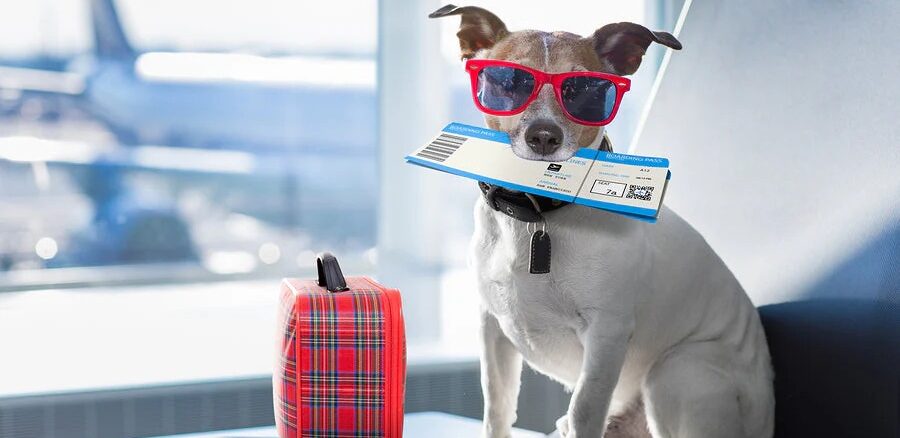Traveling with your dog or cat can be an exciting experience, whether it’s a short trip to the vet or a long road journey or flight. However, ensuring their safety and comfort is essential for a stress-free experience for both pet and owner. Here’s a comprehensive guide on how to travel safely with your dog or cat, covering preparation, transport options, and tips during travel.
-
1. Preparation Before Travel
-
2. Choosing the Right Mode of Transport
By Car Use a Crate or Pet Seatbelt:
Letting pets roam freely inside the car is dangerous. Use a well-ventilated, crash-tested travel crate or secure them with a pet seatbelt harness. The crate should be large enough for your pet to stand, turn, and lie down comfortably.
Never Leave Pets Alone in the Car:
Even on mild days, the temperature inside a parked car can rise quickly, leading to heatstroke or death. Always take your pet with you or have someone stay with them when stopping.
Frequent Breaks:
Stop every 2–3 hours to allow your dog or cat to stretch, drink water, and relieve themselves. Keep dogs leashed during breaks and transport cats in their carrier at all times.
No Heads Out the Window:
It might look cute, but letting dogs stick their heads out the window can cause eye injuries or ear infections from flying debris and wind.
By Airplane:
Check Airline Pet Policies:
Each airline has different rules for pet travel. Some allow pets in the cabin, while others require them to travel as checked baggage or cargo. Always check size and breed restrictions.
Cabin vs. Cargo:
If possible, opt for cabin travel. It’s safer and less stressful. Your pet must be in a soft-sided carrier that fits under the seat in front of you. Cargo travel can be riskier due to temperature changes, noise, and handling, especially for brachycephalic (short-nosed) breeds like Bulldogs or Persians.
Label the Crate:
Attach a label to the carrier/crate with your name, phone number, destination address, and a “Live Animal” sign. Include feeding and medication instructions if needed.
Avoid Sedation:
Do not sedate your pet unless advised by a vet. Sedatives can affect heart rate and breathing, especially at high altitudes.
-
3. Safety Tips During Travel
Stick to a Routine:
Maintain regular feeding and bathroom times to reduce stress. However, avoid feeding right before travel to prevent motion sickness—offer food 3–4 hours before departure.
Hydration is Key:
Make sure your pet has access to clean drinking water. Carry a spill-proof bowl or a water bottle with a dispenser.
Comfort and Familiarity:
Bring items from home, like your pet’s favorite blanket or toy. Familiar scents and objects can ease anxiety.
Stay Calm:
Pets pick up on your emotions. Staying calm and relaxed will help them feel safe and secure.
-
4. Hotel or Destination Stay
Pet-Friendly Accommodation:
Always book accommodations that are explicitly pet-friendly. Check if there are extra charges or restrictions.
Pet-Proof the Room:
On arrival, check for hazards like open windows, toxic plants, or small objects that could be swallowed.
Routine and Exercise:
Keep a consistent feeding and walking schedule. A well-exercised pet is more relaxed and less likely to act out.
Avoid Leaving Them Alone:
If you need to leave your pet in the hotel room, inform the reception. Leave a “Do Not Disturb” sign, and ensure your pet is secure in a crate or pet-proofed area.
-
5. Extra Tips
-
Conclusion
Traveling with your dog or cat can be a joyful and enriching experience when done safely. With careful planning, the right gear, and a calm approach, you can ensure that your furry friend is comfortable, secure, and happy on the journey. Whether it’s a road trip or a flight across the country, treating your pet like a valued passenger will make all the difference.
Share This Post

